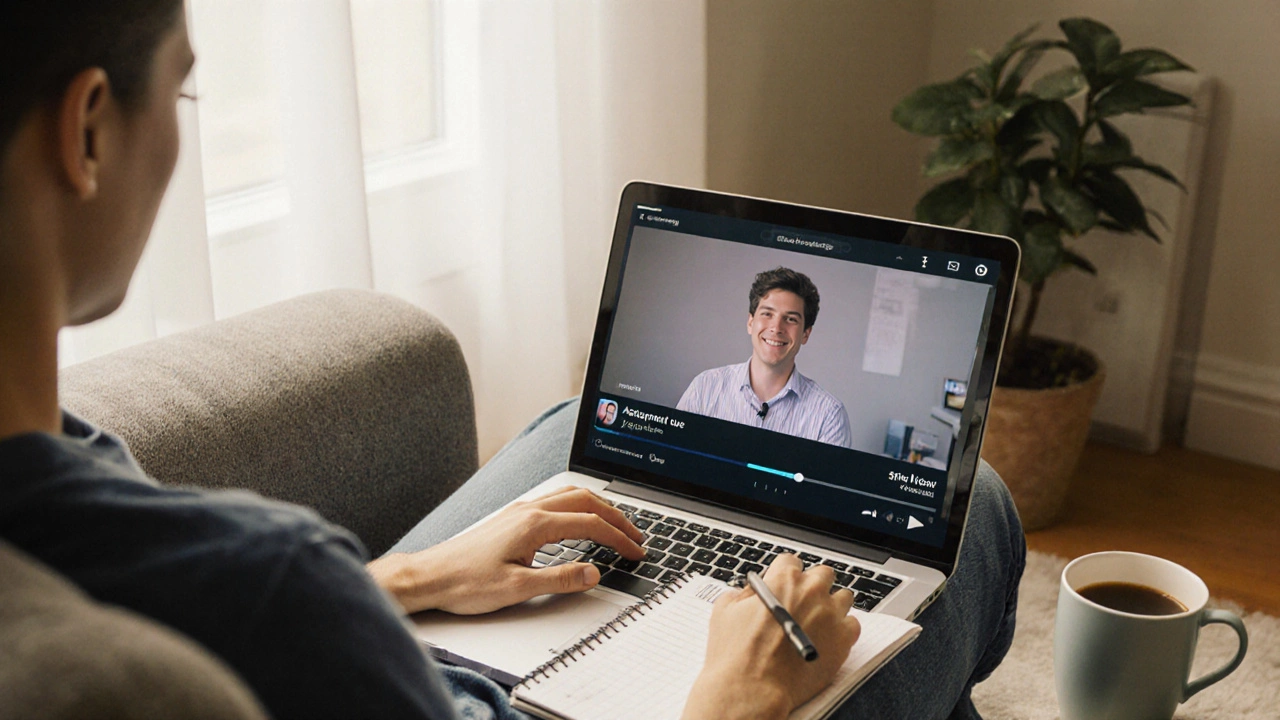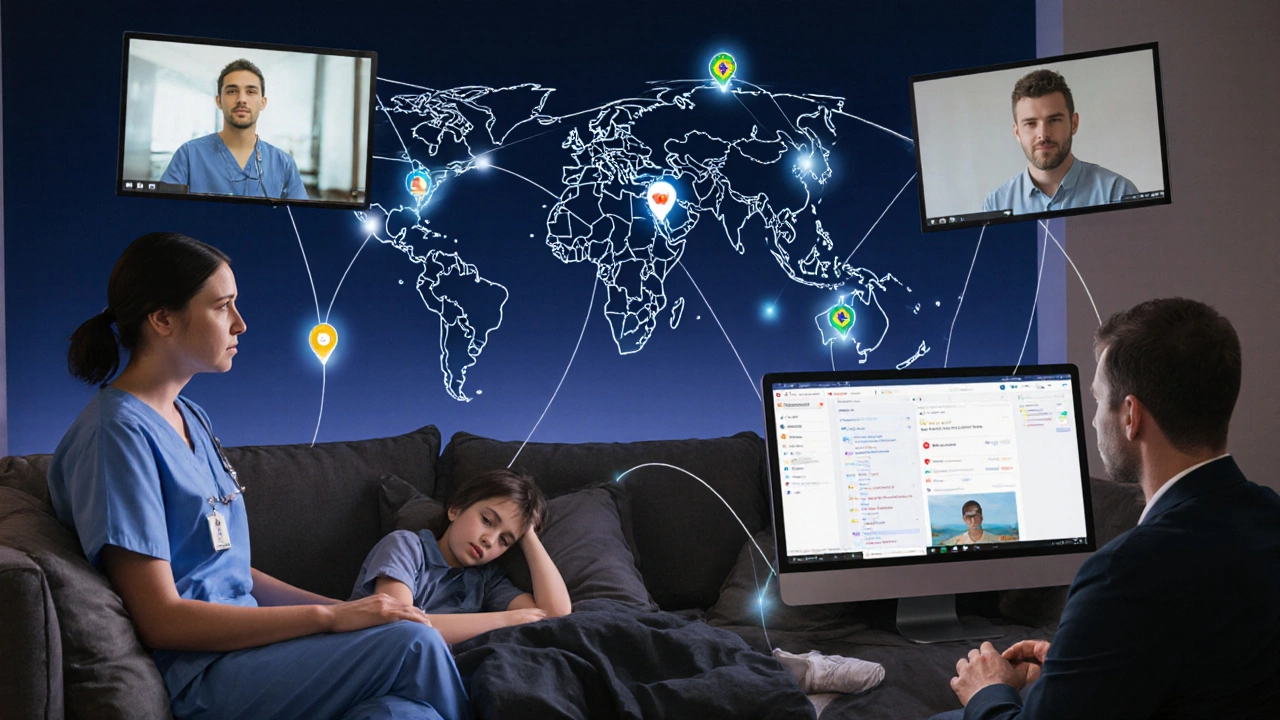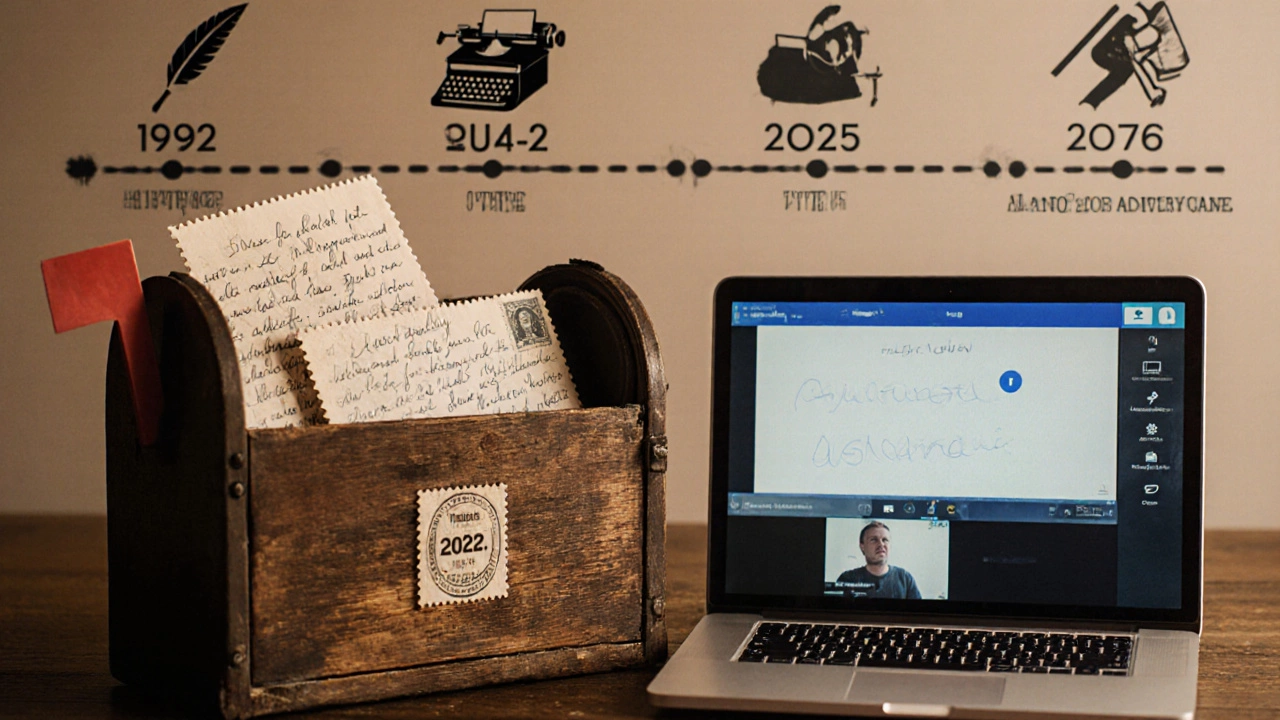
Distance Education Suitability Quiz
Find Out If Distance Education Is Right For You
Answer these three questions to see if distance learning matches your needs and learning style. This tool is based on the article "What Is Distance Education in Simple Terms?".
Ever sat at home, watching TV, and thought - distance education is just watching videos online? It’s not. It’s not even about sending emails to your teacher. Distance education is a full way of learning where you don’t need to be in the same building as your teacher - and it’s been around longer than you think.
It’s Not New, But It’s Getting Better
Back in the 1800s, people in rural Australia sent letters to get lessons by mail. They’d get a textbook, do the exercises, and mail back their answers. A teacher would grade them and send feedback. That was distance education. Today, you do the same thing - but with video lectures, live chats, quizzes that auto-grade, and discussion boards where students from India, Brazil, and Canada all talk about the same topic.
It’s still learning. Still exams. Still deadlines. Just without the commute. No need to wake up early, rush to a bus, or sit in a crowded classroom. You learn when you have time - after work, before bed, on your lunch break.
How Does It Actually Work?
Here’s how it works in real life:
- You pick a course - say, a diploma in business management or a certificate in graphic design.
- You sign up online. Pay once. Get instant access to everything: videos, readings, assignments.
- You watch a video lecture. Pause it. Rewind it. Watch it three times if you need to.
- You read a PDF. Highlight it. Take notes in your own app.
- You submit an assignment. It goes to your teacher. They give you feedback in writing - sometimes even a short video reply.
- You join a weekly Zoom call. Or post a question on the forum. Someone else has the same problem. You help each other.
No one is watching you. No one is forcing you to sit still. But if you want to pass, you still have to do the work. The rules haven’t changed - just the tools.
Who Is It For?
People think distance education is only for stay-at-home parents or retirees. That’s not true.
It’s for:
- A nurse in Perth working night shifts who wants to upgrade her qualifications.
- A single dad in Adelaide who can’t afford to quit his job to go to university.
- A student in regional Queensland who doesn’t have a local college offering the course they need.
- A 45-year-old in Melbourne who wants to switch careers but can’t risk losing income.
- A teenager in Tasmania who learns better alone and hates loud classrooms.
It’s not about being stuck somewhere. It’s about being free to learn on your own terms.

What You Need to Get Started
You don’t need fancy gear. You don’t need to be a tech expert.
Here’s what you really need:
- A device - phone, tablet, laptop. Doesn’t matter which. Even an old laptop from 2015 works.
- Internet. Not even high-speed. 2G is enough to download PDFs and watch low-res videos.
- A quiet space. Not a perfect room. Just a corner where you won’t be interrupted for 30 minutes.
- A calendar. Or a notebook. Or a reminder on your phone. You need to schedule your study time - even if it’s just 20 minutes a day.
That’s it. No expensive software. No special headset. No app you have to pay for.
Why It’s Not Just ‘Watching Videos’
Some people think distance learning means you just click play and forget about it. That’s the biggest mistake.
Real distance education is structured. It has:
- Deadlines - assignments due every week.
- Exams - taken online, sometimes with proctoring software.
- Feedback - teachers give you comments, not just grades.
- Interaction - you reply to classmates, join group projects, debate ideas.
It’s not passive. It’s active. You’re not a spectator. You’re a participant. You just participate from your couch.
And here’s the thing: studies show people who learn this way often remember more. Why? Because they control the pace. They rewatch confusing parts. They pause and think. They don’t rush because the class moved too fast.
Is It Accepted by Employers?
Yes - if it’s from a real institution.
Back in 2010, some employers were skeptical. Now? Most don’t care where you studied. They care what you can do.
If you have a certificate from a government-recognized university or a well-known online provider like TAFE, Open Universities Australia, or a university partner like Curtin or Monash - your degree or diploma holds the same weight as one earned on campus.
Check the institution’s accreditation. If it’s listed on the Australian Government’s TEQSA register, it’s valid. That’s the only thing that matters.

What Are the Downsides?
It’s not perfect. Here’s what can go wrong:
- You get lonely. No campus. No friends walking to class with you.
- You procrastinate. No one’s there to say, ‘Hey, you’re late again.’
- You miss hands-on stuff - like labs, workshops, or art studios.
But here’s how people fix it:
- Join online study groups. Talk to others. Make friends.
- Set alarms. Use apps like Forest or Google Calendar to lock in study time.
- Look for hybrid options - some courses offer one or two in-person sessions per semester for practical work.
It’s not about having everything perfect. It’s about having enough to get you where you want to go.
How to Know If It’s Right for You
Ask yourself these three questions:
- Can you stick to a schedule without someone reminding you?
- Do you learn better by reading and watching than by listening in a lecture?
- Are you okay with not seeing your teacher every day?
If you answered ‘yes’ to at least two, you’re likely a good fit.
If you’re unsure? Try a free short course first. Many providers offer a one-week intro with no cost. See how you feel. Then decide.
Final Thought: It’s About Freedom, Not Just Convenience
Distance education isn’t a backup plan. It’s not second-best. It’s a real, powerful way to learn - especially if your life doesn’t fit the old model of school.
It lets you learn while working. While parenting. While healing. While traveling. While living your life - not putting it on hold.
And that’s why, in 2025, more people in Australia - and around the world - are choosing it. Not because they have to. But because they want to.
Is distance education the same as online learning?
Almost always, yes. The terms are used interchangeably today. But technically, distance education can include mail-based courses or recorded DVDs - things that don’t need live internet. Online learning means you’re connected in real time. For most people today, they’re the same thing.
Can I get a degree through distance education?
Yes. Universities in Australia like Charles Sturt, Bond, and the University of Southern Queensland offer full bachelor’s and master’s degrees through distance education. The diploma you receive says the same thing as one earned on campus - just with a note that it was completed remotely.
Do I need to be good with computers?
No. Most platforms are designed like simple websites. You click to watch a video, upload a file, or reply to a message. If you can use Facebook or shop online, you can handle distance education. Technical support is always available if you get stuck.
Are distance education courses cheaper?
Often, yes. You save on transport, parking, housing, and sometimes even textbooks - many are free PDFs. Some courses cost 20-30% less than on-campus versions. But always check the total cost. Some have hidden fees for exams or materials.
What if I fall behind?
Most distance programs let you pause or extend deadlines. You can usually take a break for a month or two without losing your place. Some even let you finish within two years instead of one. Flexibility is built in - but you still need to complete the work eventually.
